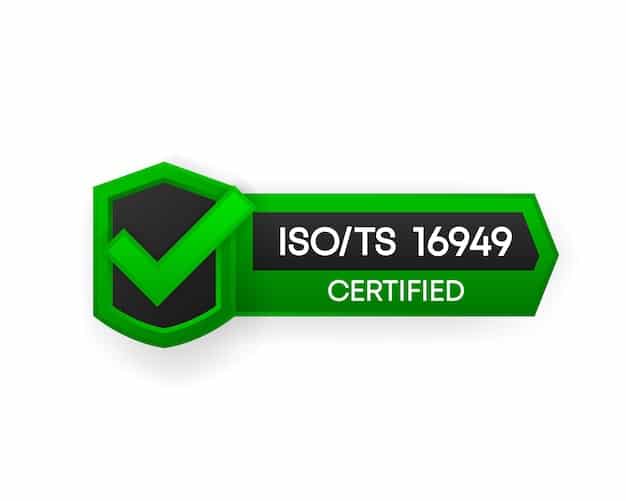Is Carbon Offsetting Worth It? A 2025 Analysis for US Ethical Travelers

In 2025, carbon offsetting for US ethical travelers requires careful evaluation, considering evolving standards, project credibility, and the availability of more direct climate action strategies.
Is carbon offsetting still worth it? A 2025 analysis for US ethical travelers reveals a nuanced landscape. With growing concerns about greenwashing and the effectiveness of offset projects, it’s crucial to examine the current state of carbon offsetting and its relevance for responsible travel choices.
Carbon Offsetting in 2025: A Shifting Landscape for Ethical US Travelers
The world of sustainable travel is constantly evolving, and with it, the role of carbon offsetting. For US ethical travelers in 2025, understanding the current dynamics of carbon offsetting is paramount for making informed decisions about minimizing their environmental footprint. It’s not simply a matter of buying credits; it’s about ensuring those credits translate into tangible, positive impacts.
The Rise of Scrutiny and Demand for Transparency
In recent years, carbon offsetting has faced increasing scrutiny. Claims of dubious project quality, lack of additionality (meaning the project would have happened anyway), and outright greenwashing have tarnished the industry’s reputation. As a result, ethical travelers are demanding greater transparency and accountability from carbon offset providers.
- Focus on certified projects: Look for projects verified by reputable organizations like Gold Standard or Verified Carbon Standard (VCS).
- Understand the project type: Different projects have different impacts and risks. Research the specific technology or activity being supported.
- Verify additionality: Ensure the project wouldn’t have occurred without the carbon offset funding.

The Impact of Technological Advancements
Technological advancements are reshaping the carbon offsetting landscape. New methods for carbon capture, storage, and renewable energy generation are emerging, offering potentially more effective and verifiable offset opportunities. Travelers should be aware of these advancements and consider supporting projects that utilize innovative technologies.
For example, direct air capture (DAC) technology, which removes CO2 directly from the atmosphere, is gaining traction. While still expensive, DAC offers a promising long-term solution for mitigating climate change. Similarly, advancements in renewable energy storage, such as battery technology, are making renewable energy projects more reliable and attractive.
In conclusion, the carbon offsetting landscape in 2025 is characterized by increased scrutiny, technological advancements, and a growing demand for transparency. Ethical US travelers need to be discerning consumers, carefully evaluating offset projects and considering alternative strategies for reducing their environmental impact.
Evaluating Carbon Offset Projects: Key Considerations for 2025
Choosing the right carbon offset project is crucial for ensuring your contributions make a genuine difference. In 2025, the evaluation process extends beyond simply looking at a price tag. Ethical US travelers need to delve deeper into the project’s details to assess its credibility and effectiveness.
Beyond the Basics: Additionality, Permanence, and Leakage
Three key concepts are essential for evaluating carbon offset projects: additionality, permanence, and leakage. Understanding these concepts will help you identify projects that truly contribute to climate change mitigation.
Additionality: As mentioned earlier, additionality refers to the principle that the carbon offset project would not have occurred without the funding from the sale of carbon credits. Additionality ensures that your investment is driving new emissions reductions, rather than simply funding existing activities.
Permanence: Permanence refers to the long-term storage of carbon. Some offset projects, such as tree planting, may be vulnerable to reversal due to deforestation, wildfires, or disease. It’s important to consider the permanence of the carbon storage and the measures in place to prevent reversal.
Leakage: Leakage refers to the unintended increase in emissions outside the project boundary as a result of the project. For example, a forest conservation project could lead to increased deforestation in a nearby area. It’s important to assess the potential for leakage and the measures in place to mitigate it.

Questions to Ask Before Investing in Offsets
- What type of project is it? (e.g., renewable energy, forestry, direct air capture)
- What certification standard does it adhere to? (e.g., Gold Standard, VCS)
- How is additionality ensured?
- How is permanence guaranteed?
- Are there measures in place to prevent leakage?
By carefully considering these factors and asking critical questions, ethical US travelers can make more informed decisions about investing in carbon offset projects. This deeper evaluation process helps ensure that their contributions are truly making a positive impact on the climate.
In conclusion, evaluating carbon offset projects in 2025 requires a comprehensive understanding of additionality, permanence, and leakage. By asking the right questions and scrutinizing project details, ethical travelers can make more informed decisions and support projects that genuinely contribute to climate change mitigation.
Alternative Strategies: Beyond Carbon Offsetting for US Travelers
While carbon offsetting can play a role in mitigating the environmental impact of travel, it’s not the only option available. For US travelers in 2025, a range of alternative strategies offer more direct and potentially more effective ways to reduce their carbon footprint.
Prioritizing Low-Carbon Transportation
Transportation is a major contributor to greenhouse gas emissions from travel. Choosing low-carbon transportation options can significantly reduce your environmental impact. This includes opting for trains, buses, or electric vehicles whenever possible. When flying is necessary, consider choosing direct flights to minimize fuel consumption during take-off and landing.
Supporting Sustainable Accommodation
Accommodation also plays a significant role in the environmental impact of travel. Look for hotels and other lodging options that have implemented sustainable practices, such as energy efficiency measures, water conservation, and waste reduction programs.
Additionally, consider supporting locally owned and operated businesses. These businesses are often more invested in the local environment and economy, and they may be more likely to adopt sustainable practices.
Reducing Consumption and Waste
Travel can often lead to increased consumption and waste. To minimize your impact, pack light, bring your own reusable water bottle and coffee cup, and avoid single-use plastics. Support local businesses that prioritize sustainability and responsible waste management practices.
- Offsetting vs. reducing: Prioritize direct emission reductions over relying solely on offsets.
- Behavioral changes: Adapt travel habits to lower the carbon footprint.
- Supporting local economies: Choose locally-owned businesses that promote sustainable tourism practices.
By embracing these alternative strategies, US travelers in 2025 can move beyond simply offsetting their emissions and take more proactive steps to reduce their environmental impact. These strategies not only benefit the environment but can also enhance the travel experience by fostering a deeper connection with local communities and cultures.
In conclusion, alternative strategies offer US travelers a range of options beyond carbon offsetting for reducing their environmental impact. Prioritizing low-carbon transportation, supporting sustainable accommodation, and reducing consumption and waste are all effective ways to minimize your footprint and promote responsible travel.
The Role of Technology in Verifying Offset Project Impact
Technology is playing an increasingly crucial role in verifying the impact of carbon offset projects. For US ethical travelers in 2025, understanding how technology is being used to track and measure carbon reductions is essential for ensuring the credibility of offset projects.
Satellite Monitoring and Remote Sensing
Satellite monitoring and remote sensing technologies are providing valuable data on land use, forest cover, and other environmental factors relevant to carbon offset projects. These technologies can be used to track deforestation rates, monitor forest growth, and assess the impact of conservation efforts. Satellites are making it possible to independently verify the claims made by offset project developers.
Blockchain Technology and Transparency
Blockchain technology is being used to create more transparent and traceable carbon offset markets. Blockchain allows for the creation of digital records of carbon credits that can be easily tracked and verified. This technology can help to reduce fraud and greenwashing by providing greater transparency into the origin and ownership of carbon credits.
Artificial Intelligence and Data Analysis
Artificial intelligence (AI) is being used to analyze large datasets and identify patterns that can help improve the effectiveness of carbon offset projects. AI can be used to optimize forest management practices, predict the impact of climate change on forest ecosystems, and identify areas where conservation efforts are most needed.
- Enhanced monitoring: Real-time data improves project verification using advanced digital technologies.
- Transparency and trust: Blockchain ensures carbon credits are traceable and verifiable.
- Data-driven insights: AI and data analytics optimize project efficiency and outcomes.
By leveraging these technological advancements, ethical US travelers can have greater confidence in the credibility and effectiveness of carbon offset projects. Technology is helping to create a more transparent and accountable carbon offset market, ensuring that investments are truly contributing to climate change mitigation.
In conclusion, technology is transforming the carbon offset industry, enabling more accurate monitoring, greater transparency, and data-driven optimization. As technology continues to evolve, it will play an increasingly important role in ensuring the effectiveness of carbon offset projects.
Government Regulations and Industry Standards: The Future of Carbon Offsetting in the US
The future of carbon offsetting in the US will be shaped by government regulations and industry standards. For US ethical travelers in 2025, understanding these developments is crucial for navigating the evolving landscape of carbon offsetting and making informed decisions.
The Potential for Federal Regulations
There is growing momentum for federal regulations on carbon offsetting in the US. Such regulations could establish minimum standards for offset projects, ensure transparency and accountability, and create a level playing field for the industry. While the exact form of these regulations remains to be seen, they have the potential to significantly improve the credibility and effectiveness of carbon offsetting in the US.
The Evolution of Voluntary Standards
Voluntary standards, such as those developed by Gold Standard and VCS, are constantly evolving to address emerging challenges and improve project quality. These standards are becoming more rigorous, requiring greater transparency, additionality, and permanence. As a result, ethical travelers can have greater confidence in projects that adhere to these standards. Industry collaboration is key to establishing robust and widely accepted guidelines.
The Role of Corporate Responsibility
Many companies are incorporating carbon offsetting into their sustainability strategies. Some are going beyond simply offsetting their emissions and are investing in projects that promote broader environmental benefits. Corporate leadership in climate solutions can drive wider adoption of high-quality carbon offsets. The drive for demonstrable impact through sustainability initiatives is growing, influencing industry trends.
- Regulatory evolution: Government regulations will shape the credibility and standardization of carbon offsets.
- Standard enhancements: Voluntary standards are becoming more rigorous and comprehensive, aiming for higher project quality.
- Corporate responsibility: Businesses are increasingly adopting carbon offsetting as part of their sustainability commitments.
As government regulations and industry standards evolve, US ethical travelers will have access to more reliable and effective carbon offset options. By staying informed about these developments, travelers can make more responsible choices and contribute to a more sustainable future.
In conclusion, the future of carbon offsetting in the US hinges on the development of robust government regulations and the continued evolution of industry standards. These developments will play a crucial role in ensuring the credibility, transparency, and effectiveness of carbon offset projects.
Making Ethical Travel Choices in 2025: A Holistic Approach
For US ethical travelers in 2025, making responsible travel choices requires a holistic approach that goes beyond simply offsetting carbon emissions. It’s about integrating sustainability into every aspect of the travel experience, from planning to execution.
Consider the Entire Trip Lifecycle
Think about the entire lifecycle of your trip, from the moment you start planning to the moment you return home. Consider the environmental impact of your transportation, accommodation, activities, and consumption. Look for opportunities to reduce your footprint at every stage of the journey.
Support Local Communities and Economies
Choose locally owned and operated businesses, support local markets, and engage with local cultures in a respectful and responsible manner. This not only benefits the local economy but can also provide a more authentic and enriching travel experience. Direct contributions help sustain local environments and livelihoods.
Educate Yourself and Others
Take the time to educate yourself about the environmental and social issues facing the destinations you visit. Share your knowledge with others and encourage them to make more sustainable travel choices. Advocacy and raising awareness among fellow travelers can drive broader changes in the tourism industry.
- Holistic approach: Assess environmental impacts at all stages of the trip.
- Community support: Support local businesses and contribute to local economies.
- Education and advocacy: Promoting sustainable practices among travelers.
By adopting a holistic approach to ethical travel, US travelers in 2025 can minimize their environmental impact, support local communities, and contribute to a more sustainable future for the tourism industry. It’s about traveling with awareness, intention, and a commitment to making a positive difference.
In conclusion, the future of ethical travel lies in a holistic approach that integrates sustainability into every aspect of the travel experience. By considering the entire trip lifecycle, supporting local communities, and educating yourself and others, you can make more responsible choices and contribute to a more sustainable future for the tourism industry.
| Key Point | Brief Description |
|---|---|
| 🌱 Project Evaluation | Assess projects for additionality, permanence, and leakage before investing. |
| ✈️ Low-Carbon Travel | Choose trains, buses, or direct flights to minimize transportation emissions. |
| 💡 Tech Verification | Technology improves transparency and efficiency in offset projects. |
| 🏢 Industry Standards | Evolving to ensure better regulation for greater project accountability. |
FAQ Section
▼
Reputable projects adhere to stringent standards like Gold Standard or VCS, ensuring additionality, permanence, and transparency, alongside verifiable emissions reductions. Look for projects with community benefits.
▼
Yes, trains, buses, and electric vehicles offer lower-emission options. For necessary flights, opt for direct routes, pack light, and consider airlines investing in sustainable aviation fuel.
▼
Satellites monitor project sites, blockchain ensures credit traceability, and AI optimizes project management. These tools enhance transparency and accuracy in carbon reduction verification.
▼
Federal regulations set minimum standards and ensure industry accountability, fostering confidence among ethical travelers and promoting widespread adoption of credible carbon offset practices.
▼
Ethical travelers should assess full trip impacts, support local economies, and promote sustainable practices. Informed decisions drive responsible travel, fostering positive impacts in visited communities and environments.
Conclusion
In conclusion, navigating the complexities of carbon offsetting in 2025 requires a discerning eye. By prioritizing verified projects, embracing alternative strategies, and staying informed about industry developments, US ethical travelers can make impactful choices that contribute to a more sustainable future.





